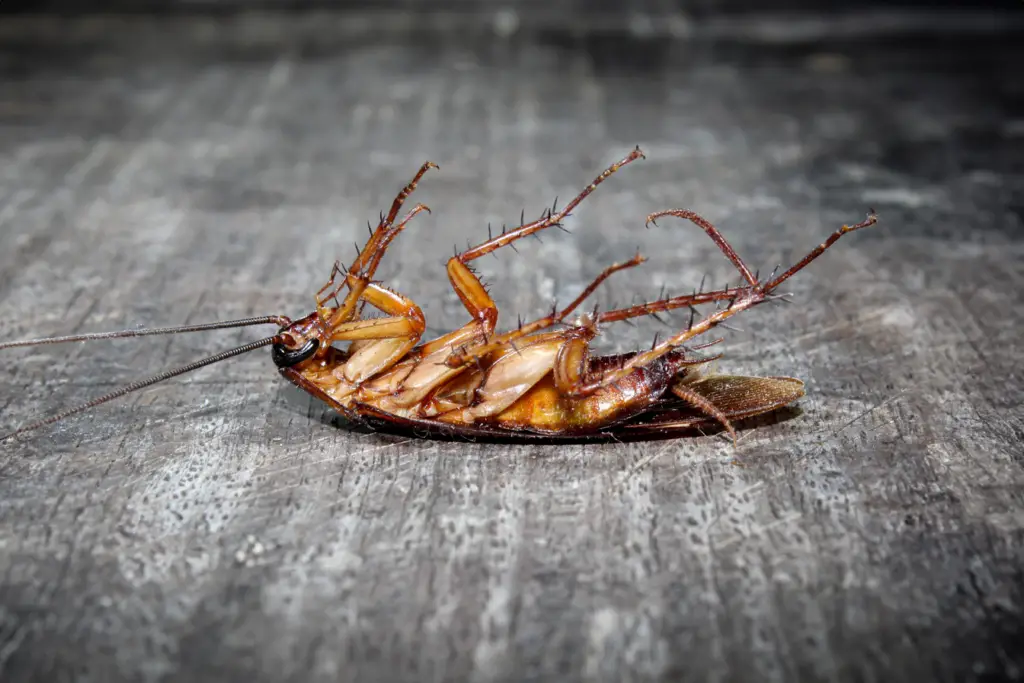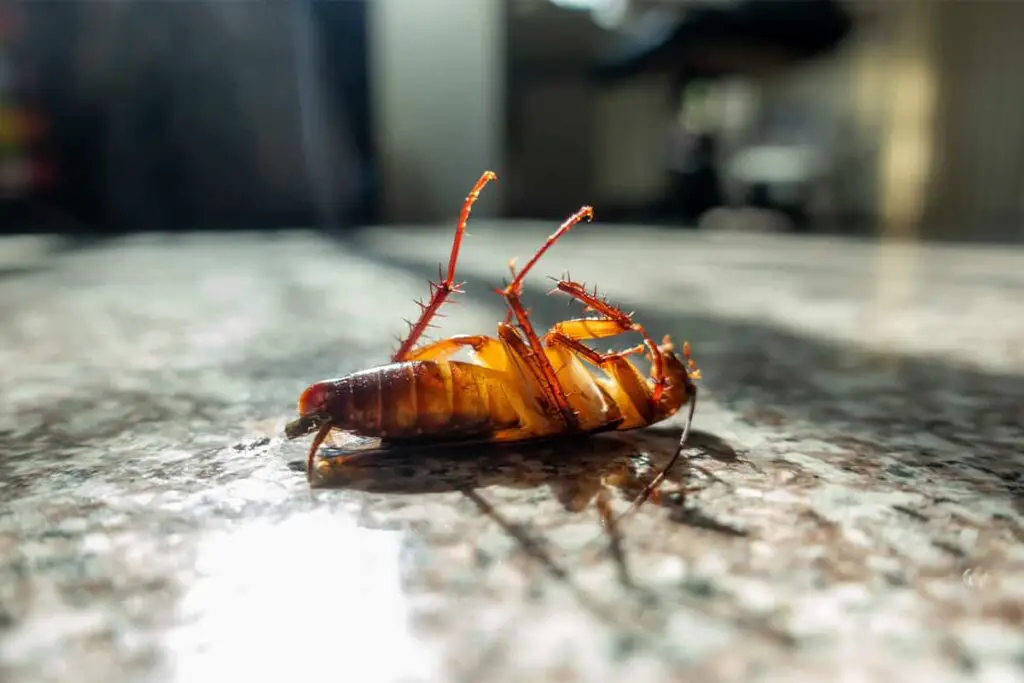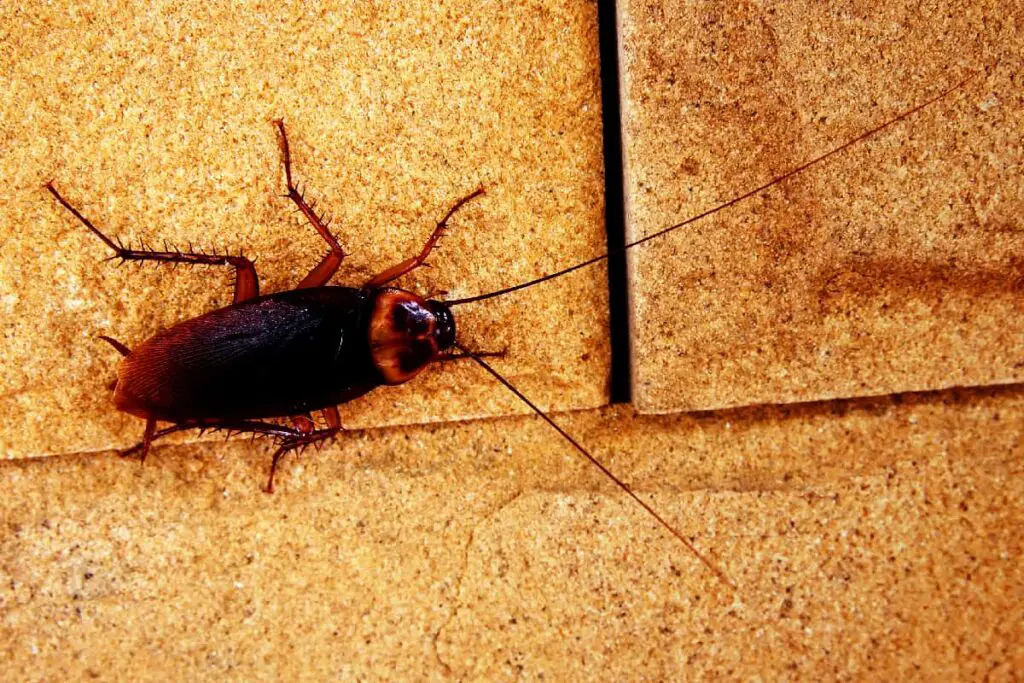
Cockroaches are among the most unwelcome guests in our homes, and you might have wondered if the smell of a dead cockroach can attract even more of these pesky insects. It’s a common concern, as we want to eliminate these pests but not inadvertently invite more into our homes.
Dead cockroaches attract more of their kind due to the release of a chemical called oleic acid. This pungent, moldy aroma can be detected by other cockroaches from afar, making it important to dispose of any dead roaches instead of leaving them behind. Oleic acid can also act as a deterrent for some roaches, essentially warning them of danger.
In examining this phenomenon, it’s key to consider other factors like pheromones, the environment, and the conditions that typically attract cockroaches. Let’s dive into this fascinating topic, exploring the various ways these curious insects communicate through chemicals and what we can do to avoid attracting more of them into our homes.
Do Dead Cockroaches Attract More Cockroaches
Oleic Acid
From my own experience with dead cockroaches, I have found that they do attract more of their kind. One of the main reasons behind this is the release of a chemical called oleic acid. When a cockroach dies, its decomposing body emits this pungent, moldy-smelling substance which acts as a signal for other roaches to detect and locate the dead one.
Interestingly, oleic acid also serves as a warning sign for fellow cockroaches, typically deterring them from moving closer to the source of the smell. In certain situations, such as when other roaches are hungry, this warning signal can be overridden and misinterpreted as an easy meal.
Pheromones
Another factor that contributes to the attraction of more cockroaches is the presence of pheromones. These are chemical substances that insects release in order to communicate with each other. Pheromones play a crucial role in attracting additional pests to the spot where a cockroach has been killed.
If you’re dealing with a dead cockroach it’s important to dispose of it properly to avoid attracting more of these unwanted pests.
Cockroach Infestation Factors
Food and Water Sources
One of the main factors contributing to a cockroach infestation is the availability of food and water sources. Cockroaches thrive in environments where they can easily access food, such as kitchens and dining areas. They are attracted to crumbs, grease, and food residue left behind on countertops, floors, and even inside appliances. To prevent an infestation, always make sure to clean up spills and food debris promptly, and store food in well-sealed containers.
Water is another essential resource for roaches, and they can often be found in areas with leaks, standing water, or high humidity. Pay special attention to maintaining plumbing, repairing leaks, and eliminating excess moisture to discourage cockroaches from moving in.

Cracks and Crevices
Roaches are experts at finding hiding spots. They love small, dark spaces and can easily inhabit cracks and crevices in walls, floors, and cabinets. These hideouts provide a safe haven for roaches, allowing them to reproduce and contribute to a growing infestation. To minimize the risk of infestation, regularly inspect and seal any gaps around your home, paying special attention to areas around pipes, vents, and electrical outlets.
Warmth and Humidity
Finally, warmth and humidity play a significant role in attracting cockroaches. They prefer environments with temperatures between 25°C and 30°C, and high humidity levels provide them with the moisture they need to survive. Try to maintain a comfortable temperature in your home, and use dehumidifiers to control humidity levels, especially during the warmer months.
By understanding and addressing these factors, you can effectively prevent or reduce the chances of a cockroach infestation in your home. Keeping your living environment clean, eliminating hiding spots, and maintaining a comfortable temperature and humidity level all contribute to deterring these unwelcome pests.
Preventing and Handling Infestations
Cleaning and Maintenance
To prevent cockroach infestations, focus on maintaining a clean and sanitary living environment. Make sure to regularly clean your home, especially the kitchen, where food residues and crumbs may attract these pests. By wiping down countertops, sweeping floors, and removing any traces of food you will minimize the likelihood of an infestation. Keep your food in airtight containers to help prevent roaches from accessing it.
Pay close attention to any signs of humidity or warmth, as these conditions are attractive to cockroaches. You can address moisture issues by fixing leaky pipes and faucets, and ensure that spaces like closets and attics are well-ventilated. To deal with any potential entry points for these pests, caulk and seal cracks and gaps in your home’s foundation, and make sure there aren’t any broken or leaky pipes.
Pest Control Methods
When dealing with an existing infestation, a range of pest control methods are available to effectively eliminate the problem. My suggestion would be to first try using gel baits, which are an effective way to reduce the population of cockroaches in your home. Additionally, use pheromone roach traps to attract cockroaches using the scent of the very pheromones they use to communicate with each other.
If the infestation persists, I would consider opting for more potent solutions like diatomaceous earth or boric acid. These substances can be effective in killing not only adult roaches, but also their nests. It’s important to note that when dealing with chemicals or pesticides, ensure the safety of your family and pets by following the product instructions and taking all necessary precautions.
If the infestation gets out of hand, please don’t hesitate to call a professional exterminator. They have the necessary expertise and equipment to effectively eliminate the pests.
Through diligent cleaning, proper maintenance, and the use of appropriate pest control methods, you can effectively prevent and handle any cockroach infestations in your home.
Cockroach Species and Characteristics
German Cockroach
German cockroaches are a common indoor pest, especially in densely-populated areas. These small, light brown insects have two dark stripes running down their backs and are known for their rapid reproduction. German cockroach feces releases fatty acids as they decompose, producing a distinctive musty odor. This odor sends a signal to other live cockroaches in the vicinity, attracting them to the site.
Killing a cockroach can also release these fatty acids, drawing in more cockroaches to investigate. The circle of life continues because the survivors feed on the exoskeleton and remains of their fallen companion. It’s all a bit disgusting, but it’s essential to be careful when killing a cockroach as this can lead to an unintentional influx of more of these pests.
American Cockroach
American cockroaches are larger and darker in color compared to their German counterparts. They are reddish-brown, with a distinctive yellowish margin on their pronotum. These roaches prefer warm, moist environments and can often be found outdoors or in damp indoor spaces, such as basements and sewer systems.
In the case of the American cockroach, they also produce unpleasant odors. These smells serve as a communication tool among cockroaches, helping them locate food sources, safe habitats, and potential mates. When an American cockroach perishes, its decomposing body releases a similar scent, which can also attract more cockroaches to the area.
Whether we are talking about German or American cockroaches, the smell of a dead cockroach does indeed attract more of these pesky insects. Understanding their characteristics and habits can help us in devising effective strategies for managing and controlling them.
Potential Risks and Health Effects
Allergic Reactions
One of the most significant risks associated with the smell of a dead cockroach is the potential for allergic reactions. Cockroach allergens can be found in their feces, saliva, and body parts. When a cockroach dies, these allergens can be released into the air or remain on surfaces, such as floors and furniture. People who suffer from allergies or asthma may experience symptoms such as sneezing, itching, and difficulty breathing when exposed to these allergens.
To minimize the risk of allergic reactions, make sure to clean the area thoroughly after finding a dead cockroach. This includes wiping down surfaces and properly disposing of the insect. Take measures to prevent cockroach infestations, like sealing crevices and keeping your kitchen cabinets clean.
Spread of Bacteria and Germs
Another concern regarding the smell of a dead cockroach is the potential spread of bacteria and germs. Cockroaches are known to carry various harmful microorganisms, including harmful bacteria such as E. coli and Salmonella. These germs can contaminate surfaces and objects the cockroach came into contact with, including floors, furniture, and kitchen cabinets.
To reduce the risk of infection, I recommend the following precautions when dealing with a dead cockroach:
- Wear gloves while handling the insect.
- Dispose of the dead cockroach in a sealed plastic bag.
- Clean the affected area with a disinfectant or bleach to eliminate any remaining germs.
- Maintain a clean living environment to prevent future infestations.
If you suspect a more severe infestation don’t hesitate to seek professional help. A pest control expert can assess the situation and provide appropriate treatment to eliminate the problem efficiently and prevent recurring issues.
Remember not to panic if you find a dead cockroach; just follow the appropriate cleaning and prevention steps mentioned above. With due diligence and proper care the potential risks and health effects are easily mitigated.
Non-Chemical Cockroach Control
When it comes to controlling a roach problem, I’ve found that non-chemical methods can be quite effective, especially when combined with other strategies. Simple, non-toxic approaches can help reduce their numbers without needing to resorting to harsher chemicals.
One natural solution is boric acid, a readily available compound that’s highly effective in killing a cockroach population without causing harm to humans or pets. A light dusting of boric acid along baseboards, under appliances, and in other areas where roaches frequent can yield good results. Roaches walk through the powder, ingest it while grooming, and eventually die.
Another non-chemical method I’ve found useful is the use of traps. For instance, a homemade trap can be made with just a few household items:
- A jar or container with a tapered neck
- A piece of bread soaked in beer or other fermented liquid
- Tape, petroleum jelly, or another substance to help create a slippery surface
To make the trap, place the bait inside the jar and then smear the slippery substance around the inner rim, making it difficult for the roaches to escape once they’ve entered. The smell of the bait attracts them, and they end up trapped inside the jar.
Additionally, it’s essential to eliminate food sources and water that may be attracting cockroaches. I’ve found it most effective to:
- Keep food in tightly sealed containers
- Regularly clean countertops and floors
- Fix any leaks or moist areas
- Remove clutter and other hiding places
Also, sealing up any potential points of entry, such as gaps and cracks in walls, is an essential step in preventing a roach problem from worsening.
By following these simple, non-chemical strategies, you’ll be able to greatly reduce your cockroach problem without resorting to harsher chemical methods that may cause harm to your family and pets.
Driven by a passion for those tiny creatures that rule our world, we at Bug Domain strive to be your go-to resource for information on insects.



